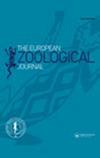Nematodes and rotifers on two Alpine debris-covered glaciers
引用次数: 21
Abstract
Abstract Debris-covered glaciers (DCGs) are glaciers whose ablation area is mostly covered by a continuous layer of debris, and are considered to be among the continental glacierized environments richest in life. DCG colonization by microorganisms, plants and animals, has been investigated in a few studies, while the meiofauna (metazoans smaller than 2 mm) of these environments has been neglected so far. In this study, we analyzed nematode and rotifer fauna on the two largest debris-covered glaciers of the Italian Alps: the Miage Glacier and the Belvedere Glacier. In total, we collected 38 debris samples on the glaciers in July and September 2009. All the rotifers we found belonged to the bdelloid Adineta vaga (Davis, 1873). Nematodes belonged to 19 species. Miage Glacier hosted a richer and more diverse nematode fauna than the Belvedere. The dominant genus was Plectus Bastian, 1865, a common genus in habitats at high latitude and altitude. Analysis of the feeding type of nematodes highlighted that bacterivores were dominant on Miage Glacier, while bacterivores and herbivores were more widespread on Belvedere Glacier. Predator nematodes were absent. Analysis of the food-web structure indicated that nematode assemblages on both glaciers were typical of environments with depleted food availability, probably resulting from instability of the glacier surface and the short exposure of sediments, preventing the evolution of true soil and enrichment in organic matter of the debris. The scarcity of bacterial primary producers suggests that deposition of allochthonous organic matter is the principal organic carbon source in this environment.阿尔卑斯冰川上的线虫和轮虫
碎屑覆盖冰川(DCGs)是一种消融区域大部分被连续的碎屑层覆盖的冰川,被认为是大陆冰川化环境中生命最丰富的冰川之一。微生物、植物和动物对DCG的定植已经在一些研究中进行了调查,而这些环境中的小动物(小于2毫米的后生动物)迄今为止一直被忽视。在这项研究中,我们分析了意大利阿尔卑斯山两个最大的冰川上的线虫和轮虫动物群:Miage冰川和Belvedere冰川。2009年7月和9月,我们总共在冰川上收集了38个碎片样本。我们发现的所有轮虫都属于蛭形Adineta vaga (Davis, 1873)。线虫共19种。Miage冰川比Belvedere冰川拥有更丰富、更多样化的线虫群。优势属为1865年的Plectus Bastian,是高纬度和高海拔地区常见的属。对线虫摄食类型的分析表明,Miage冰川上以细菌摄食为主,而Belvedere冰川上以细菌摄食和草食为主。没有捕食者线虫。对食物网结构的分析表明,这两个冰川上的线虫组合都是典型的食物供应不足的环境,这可能是由于冰川表面的不稳定和沉积物的短暴露,阻止了真正土壤的进化和碎屑有机质的富集。细菌初级生产者的稀缺表明,外来有机质的沉积是该环境的主要有机碳源。
本文章由计算机程序翻译,如有差异,请以英文原文为准。
求助全文
约1分钟内获得全文
求助全文

 求助内容:
求助内容: 应助结果提醒方式:
应助结果提醒方式:


